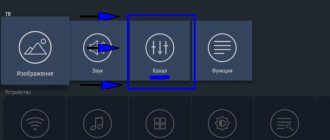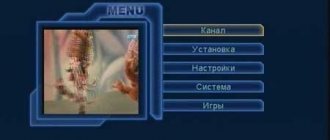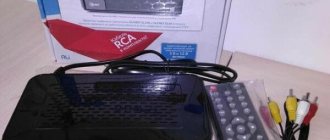How many channels are there in DVB T2 digital television for 2021?
After the advent of digital television, a large number of users became excited about the transition to a modern format. What are the reasons? Of course, in the desire to try a new product, as well as frequent discussions that the quality of the incoming signal is much higher. Accordingly, this improves the picture quality. Ease of access also attracts new users.
Digital TV can be connected even to CRT models. To do this, you will need to use additional devices. And of course, modern TV models are capable of catching this technique.
In the Moscow region and the capital, the well-known television and radio network Ostankino offers a huge number of on-air channels in the public domain. This allows you to receive a signal without additional registration and fees for Russian television programs. Reception is available both on individual antennas located in the room and on external ones.
There are also paid channels that charge a certain amount each month. How many channels are there on digital television today 2021? What is needed to receive their signal? More on this later.
Digital signal reception methods
There are four options for connecting free and pay TV channels:
- Cable. In this case, the signal is received via cable. The main disadvantage is the subscription fee. This method is not available everywhere.
- Satellite. Here, the signal is transmitted via satellite and received through an installed personal dish. There is also a specific subscription fee charged here. Requires the purchase of equipment designed for satellite TV.
- Terrestrial (DVB television). Terrestrial repeaters distribute a signal that can be received by an indoor or outdoor antenna. This connection option does not require additional financial expenses. A convenient way to watch TV programs in modern broadcast format.
The digital set-top box (Dvb T2) picks up channels differently than the previously described option. The signal level is low. It is difficult to catch it in case of bad weather, as well as its location far from the TV tower.
The lowest price is receiving digital TV using an antenna, which is installed and configured independently by the user. You can add various channels.
Multiplex is a connection in one digital package of different TV channels during digital television broadcasting, combined before transmission over the channel and separated at the final receiving element (subscriber's receiver) with the allocation of 1 or 2 TV channels.
Digital television in Russia in the DVB T2 format offers 20 TV channels, which are divided into 2 packages, this is called multiplexes. These are free to watch digital channels - there are no set subscription fees. The user only needs a TV; a set-top box with a decoder that receives the DVB T2 frequency range (if such a decoder is not available on the TV) and an antenna.
Package No. 1 is a group of information, news and development channels (Russia 1 and 2, 1 and 5 channels and others).
This package operates wherever digital television is present. If there is a working digital TV tower nearby, you will most likely receive all 10 channels. The user will be able to catch either all 10 at once, or not just one. The reason for this is that channels 1 of the multiplex are transmitted at the same frequency. Broadcasting is carried out at a frequency of 546 MHz using DVB-T2.
Package No. 2 includes entertainment TV channels (STS, Muz TV, TNT and others). The package in question is not available throughout the Russian Federation. To study the coverage area of this multiplex in detail, you need to go to the official digital TV website.
Quite often the composition of channels in this package changes. Competitions are held among programs, as a result of which the list may differ. Frequency 498 MHz with DVB prefix.
Package No. 3 is in development, but it will be paid. A cheaper and simpler option is to use cable and get more than 100 channels from 200 rubles per month.
This package will work in test mode. In it, users will also be able to find programs of maximum HD clarity.
What you need to view
To show digital television channels, special equipment is required:
- Antenna;
- Set-top box for digital television or TV with a DVB T2 tuner. The device must support the MPEG 4 standard and be capable of operating in Multiple PLP mode.
As for the antenna, you can opt for a standard analog one. If you have a new model TV, then it may have an integrated digital tuner. In this case, there is no need to buy a set-top box.
If you don't know if your model has a digital TV tuner, check the technical data sheet. Alternatively, enter the model name in the search engine.
There are two types of antenna devices:
- Active - when amplifiers are used, a connection is made to a source of electrical energy. When using a receiver, 5-V is supplied through it. This can be done through the settings in the menu – “Antenna power”. Using an active device is not always the right decision. Since if you are close to the tower, the signal may disappear completely.
- Passive - there are no additional amplifiers here. They are used most often in areas with a stable signal. This option is easier for connecting several TVs.
Let's look at the features of choosing a digital tuner. Anyone who encounters such a purchase for the first time most likely thinks that all consoles are identical. The main condition for making the right choice is to avoid making mistakes in key technical characteristics.
There are other points that can affect the further operation of the equipment and the breadth of the functional component:
- There are no buttons on the external panel of the device - this obliges the user to work only with the remote control. This is not always practical.
- If the tuner does not have a USB port, the device cannot be used as a media player. With the presence of such equipment, you can record TV shows, view photos and videos.
Please note that a set-top box with a separate power supply is considered a chic option. Most often, this element is built inside. The most common cause of tuner failure is a malfunction of the power supply. If this device fails, you can take it to a service center or replace the entire set-top box. But a separate unit is an opportunity to replace the component without any problems.
Often the TV device is attached to the wall as high as possible, in the kitchen, for example. In such a situation, it is not comfortable to use a classic console. There are modified devices of more compact sizes that are attached behind the TV using tape. The receiver is controlled by a remote control through a separate sensor, which is attached to the external panel of the TV. Power is supplied via the TV's USB port.
The set-top box can be used together with a PC monitor if there is an HDMI port. With this option, you can view the broadcast from a standard antenna.
| Number and frequency | List of television broadcast titles |
| 1 multiplex - TVK 35 (586 MHz) | 1 channel |
| Russia 1 | |
| Russia 2 | |
| NTV | |
| St. Petersburg, channel 5 | |
| Russia culture | |
| Russia 24 | |
| Carousel | |
| OTV | |
| TVC | |
| 2 multiplex - TVK 45 (666 MHz) | REN TV |
| STS | |
| Home | |
| Sport | |
| Sports + | |
| Star | |
| WORLD | |
| TNT | |
| SAVED | |
| TV3 |
In this article, we looked at the number and list of digital TV channels in 2021. We analyzed the features of connecting to television broadcasting, and also examined the packages of available TV channels.
You may be interested in:
Give your rating: (votes: 13, average score: 4.77 out of 5)
prosmarttv.ru
Common problems and their solutions
Channels are not picked up at all, “no signal”
Check the following factors:
- Serviceability of the equipment (the TV itself, the antenna and the cable connecting them). If problems are found, it is better to contact a repairman;
- Antenna adjustment. UHF antennas are extremely sensitive to the direction from which the signal comes. The problem may be resolved by changing the orientation of the antenna.
- Distance to the repeater and its power. This information can be obtained from the RTRS service. You may be in a “dead zone” that is not yet covered by the broadcast. Until new towers are built, there will be no reception in this area. All that remains is to use satellite broadcasting, which is available wherever the direction to the south is free.
- Radio shadow from nearby natural (hills, mountains and other elevations) and man-made objects (major buildings made of steel and reinforced concrete), which can interfere with the passage of the signal. This can be corrected by changing the position of the antenna (for example, raising it higher to get out of the radio shadow) and adjusting the reception of the reflected signal. You can also try to catch the air from another broadcaster if it is within 30–40 km from you.
Only part of the channels are caught
Here you need to check:
- Broadcast parameters of the nearest tower. Perform manual tuning of each multiplex on individual frequencies.
- Tuner settings on the TV itself. Perhaps some channels were not saved. The situation can be corrected by repeated automatic or manual tuning of the TV.
There were channels, but they disappeared
If reception was previously carried out reliably, but then suddenly the channels disappeared, the reason may be:
Optimal Smart TV - how to set up an interactive TV
With the right techniques, you can get better picture quality from your TV, improve movie playback, and optimize collaboration with external devices. Read on to find out how to do it.
A user who has tasted a well-equipped and functional Smart TV receiver has the right to expect that it will meet his high requirements, delivering amazingly high quality images.
And although all current TVs of this type provide Full HD resolution and simulated surround sound technology, some models can cause irritation with their picture quality immediately after switching on. The reason is poor factory settings, which you can very easily fix.
Correct Smart TV settings
Optimal distance to TV
First, you must choose the best location to place your TV. It is necessary to pay attention to the distance to the receiver from the audience. When the distance from the sofa is too short, parts of the image will appear out of focus, and in addition, a “torn edge” will become noticeable, despite the optimal image quality, which significantly reduces viewing pleasure.
There is a general rule that the larger the screen diagonal, and the lower the content playback resolution, the further you should sit from the TV.
For a 26-inch TV, it is recommended to maintain a distance of one to two meters. If you have a 42-inch receiver, the optimal distance is between one and a half to three meters. However, in the case of a 55-inch TV, the minimum interval reaches three to four meters.
When playing content in Full HD format (1080p mode), the distances can be slightly reduced. Programs broadcast in standard PAL or 576p resolution should be viewed at the maximum of the specified intervals.
In addition, the TV should not be located against or in front of a window. If you can't avoid this, you can install blinds on your windows.
The optimal distance from the receiver is the larger the screen diagonal, and the lower the resolution of the reproduced content, the greater the distance between the viewer and the TV.
Optimal TV height
Regardless of where you plan to place your TV (you can put it on a shelf or on a chest of drawers, or hang it on the wall using a special holder), viewing convenience is affected not only by the distance from the viewer, but also by the height of the screen.
In general, it is suggested that the optimal TV height is when approximately two-thirds of the screen surface is below the viewer's eye line.
Mounting a TV on the wall
Almost every Smart TV is factory prepared to hang on the wall. On the back wall of the case there are standard threaded holes for screws. Although TV manufacturers offer appropriate handles, in most cases they are expensive and you can easily use cheap models from another company.
When choosing a bracket, pay attention to the size, which should be indicated in the operating instructions for the TV or on the manufacturer’s website. The holder must be the right size and also be stable enough to support the weight of the TV.
If you're mounting the TV on a wall, you might want to try a few height levels before drilling holes, such as mounting the receiver on a makeshift shelf or lifting it with the help of friends.
Preventing your TV from overheating
Remember that your TV should not be placed in a remote place, because this will interfere with the removal of heat from the receiver during operation. Curtains, plants and furniture can significantly impede ventilation.
If the TV is on a shelf, the top and side vents should have a large enough space to allow good air circulation.
Corresponding cable for connecting devices
The best in terms of quality and also the simplest cable connection for transmitting picture and sound signals is provided by the HDMI (High Definition Multimedia Interface).
This digital broadcasting standard uses a cable with a 19-pin connector, which, along with the video signal (in the form of digital information), sends audio from an external device used to deliver content to the TV in parallel.
The big advantage of HDMI is the fact that one cable is enough to connect a DVD or Blu-ray player to a TV receiver. The HDMI standard does not apply data compression, so there is no reduction in the quality of the transmitted content during transmission.
Another advantage of HDMI is that it is backward compatible with the DVI standard. With a DVI/HDMI adapter you can transfer signals, for example, from your desktop or laptop via HDMI to your TV.
A smart TV, a Blu-ray disc player, a satellite TV tuner, a DVD recorder with a hard drive, and even a game console - regardless of the type of connected devices, HDMI ensures optimal transmission of high-definition audio content and video.
Optimal HDMI cable for Full HD TV
Although salespeople may convince you otherwise, you don't need to use an expensive HDMI cable to connect your Smart TV receiver. In most cases, a cheap cable between one and two meters in length will work equally well.
Advertising slogans such as “Special HDMI to Full HD Cable” or “Special Cable to 1080p” are designed to attract interested buyers to purchase a possibly expensive product.
The transmission is carried out in digital format, so either there is a signal or there is not – there can be no loss of quality to speak of. However, if you care about the cable serving you for many years, choose one that is tough and well made.
HDMI cables can be used to cover long distances without worrying about interference, but for longer cables (over 5 meters, especially those longer than 10m), it's worth investing in a branded model. Otherwise, errors may occur during data transmission.
Adjusting TV picture settings
In order for Smart TVs to encourage potential customers to purchase, they must look optimal in the bright light of a store environment. Therefore, the factory settings of many receivers, selected to suit the conditions prevailing in most retail outlets, are too light and bright in most homes.
You need to change additional image parameters suitable for your apartment in the TV configuration menu.
TV screen color intensity
First of all, it is necessary to reduce the color intensity, which in many TV receivers is set at too high a level.
To do this, select the image mode normal, normal, natural, or something with a similar name in the settings. It should equally convey the intensity of individual colors.
We do not recommend using modes such as Vivid, Vivid, or Dynamic, which create overly saturated colors and cause eye strain when viewed for long periods of time.
Optimal image brightness
Experts refer to the Brightness parameter as the level and balance of black, which can result in a color tint. Simply put, this setting specifies how the dark, black areas of the image are displayed on the TV.
When the brightness is set too high, the picture appears dull, lacks brightness and is dull. If it is very low, then details in the dark areas of the image will no longer be visible, and in addition, it will be more difficult to distinguish individual shades of colors.
It is better to set the brightness in the lighting conditions in which you most often watched the broadcasts.
Adjusting the brightness of the TV picture
Light sensor, energy saving mode and environmental friendliness - these three solutions are designed to reduce current consumption from the TV receiver. As a result, the brightness level decreases, causing the picture to appear too dark. Even if the TV is equipped with a light sensor, which is designed to adjust the brightness of the image to environmental conditions, in most cases it does not meet user expectations.
Although the mentioned mechanisms allow you to save several tens of rubles a year, they deprive the viewer of an optimal image. To get the best picture quality, turn off the appropriate features - depending on the model, these may have names such as eco mode, eco mode, energy saver, energy saving mode, light sensor or auto light control. Instead, manually set the brightness level in the configuration menu and, if necessary, adjust it using the remote control.
Adjusting Contrast
The Contrast parameter is used to adjust the intensity of the light parts of the image. Too high leads to the disappearance of detail in the bright parts of the picture. And when it is too low, the picture seems bland and pale. To adjust contrast, select the brightest scene possible.
TV screen backlight
If your TV receiver allows you to adjust the screen backlight, it is recommended to lower them in dark rooms. When the room is light, you can easily increase the highlight.
Improving sound quality with simple methods
The cramped cabinets of smart TV receivers leave little room for solid speakers. Therefore, it is worth improving the sound of television broadcast audio using additional equipment, Hi-Fi, home theaters or sound cards.
However, you can get relatively high quality sound without using additional speakers. In most cases, you will need to change the TV's factory settings to do this.
Some manufacturers select sound parameters very mediocrely, which does not allow using all the capabilities of the TV. To resolve this issue, bring up the configuration menu and turn off surround sound simulation in the audio settings.
Then turn off all sound effects and bass boost (circuit). If your TV allows you to adjust the bass, mid, and treble separately, set all sliders to the middle position, then adjust the sound to your preferences.
TV hanging on the wall
If your TV supports location-based audio adjustment, try enabling this feature to get better sound.
Volume jumps
The annoying problem of unexpected volume changes during commercial blocks can be solved by using the automatic audio adjustment feature that some Smart TVs offer.
These receivers are capable of detecting sudden increases in volume levels and reducing them accordingly in real time.
HDMI Audio Format
If you do not hear sound when playing content from an HDMI-connected device, open the audio settings and set the PCM audio format to the HDMI output jack.
How to get rid of the buzzing sound in your TV speakers
If you hear a buzzing sound coming from the speakers of your hi-fi equipment or TV when you connect an antenna or additional devices, you are dealing with a phenomenon called a mass loop.
In many cases, you can get rid of unwanted sound by rotating the plug-ins of interconnected devices 180 degrees in the power connectors. If this does not help, using other cables may be a solution.
Alternatively, you can purchase a special galvanic separator with a built-in filter, which is inserted between the aerial cable leading to the hi-fi equipment or TV and the aerial socket.
webznam.ru
What is needed for successful setup
You can configure your TV to receive 20 channels of digital terrestrial television if a number of conditions are met.
- Correct antenna. If you previously watched analogue channels and did not buy a new antenna for digital ones, then the setup will not work. The antenna will not receive a signal from the digital broadcast repeater. An analog signal is transmitted in meter-long waves. A digital signal is broadcast in decimeter waves. In each case, the antenna design is different. The length of the receiving element (vibrator) is made to match the wavelength. This means that for analogue broadcasting you need a “meter” antenna, and for digital broadcasting – a “decimeter” antenna. In addition to factory ones, you can make an antenna yourself. The homemade design is only suitable for receiving a strong signal. The TV tower should be located at a distance of no more than 15 km.
- The correct location for installing the antenna and its direction. It is better to place the antenna outside so that there are no barriers to the signal in the form of walls. The higher the antenna is, the less likely it is that there will be obstacles in the signal path, for example, tall buildings, hills, etc. Directivity also affects the quality of the signal. It is better to find out the location of the tower and point the antenna towards the broadcaster with an accuracy of a degree.
- Coaxial cable that connects the antenna to the television receiver. One end of the cable is connected to the antenna. The second has a connector that is inserted into the antenna connector of a TV receiver or T2 tuner.
- The TV allows you to configure digital channels. This means that the equipment must have a built-in DVB-T2 tuner. All modern TVs, especially those with Smart TV, have a built-in digital receiver. On your old TV you need to make sure it supports DVB-T2. You can verify support for the digital standard from the documentation for your TV. Additionally, you can enter the model code in the search, go to any website and look at the characteristics. The line “DVB-T2” should contain “+” or “Yes”. There may be other line names. For example, the line “Built-in tuners”, which lists all supported television standards. You can check the presence of a “digit” experimentally. Go to TV settings or TV channel search mode. If there is no choice of broadcast type (analog or digital), then DVB-T2 channels cannot be configured. You'll have to buy a new TV or use an external digital tuner.
When all conditions are met, you can set up digital television.
How to set channels on TV?
Television and the Internet have become an essential part of every home. It is impossible to live without a TV, it is impossible to live without the Internet. The 21st century has literally “infected” everyone with the above names, but at the same time it is really convenient and interesting.
Questions about setting up television channels are increasingly appearing. Many, not knowing about such a trifle, simply do not even suspect that their TV has greater capabilities. It is quite possible to expand the range of available channels, but how?
1. In order to start searching for channels in automatic mode on the TV, press “Menu” on the remote control, then select “channel setup”, “automatic tuning”. An independent search will indicate that all working frequencies will be stored in the TV’s memory and thus a larger number of channels may appear. 2. Channel search can also be done manually. To do this, press “Menu” on the remote control, select “channel tuning”, “manual tuning”. In this case, as soon as the search hits the operating frequencies, it will inform the user about it. It is possible to save the channel (if it is not in your list), or continue searching without saving (if it is already on the TV). Why is it impossible to find anything new when searching for new channels?
It all depends on the range of the antenna that picks up the operating frequencies. A high-quality antenna can pick up signals very far away. Many people do not even install satellite television, since high-quality signal receivers cope with them perfectly (however, the location in which there is absolutely no interference plays a special role here).
It is possible to get more channels only if you change the antenna to a better one. The signal will become stronger, which means the search will increase the number of channels.
However, at the same time, modern channels are actively replacing the Internet. The main advantage is the lack of advertising. Therefore, think about it and decide for yourself what will be more comfortable for you personally when viewing.
pochemuha.ru
Alternative
There are several more ways to increase the number of TV channels on a digital set-top box. To do this, you can use the services of cable operators, for example, MTS, Rostelecom and others. Another way is to install a satellite dish, for example, connect to Tricolor. The disadvantage of these methods is that such television will not be free - you will have to pay a monthly rent for it.
When asked whether it is possible to add channels to a digital set-top box and increase their number to 200 or more, the answer is unequivocal - yes. To do this, you can go two ways. In the first case, use the free method and connect to IPTV television. If this method could not be implemented, there are always options for connecting cable or satellite TV.
Console
There is no need to rush into purchasing this device if digital television broadcasting has not yet been organized in your area. It’s worth waiting until work starts to test the decoder right in the store. A receiver is a compact electronic device that receives a signal from an antenna, then converts it and sends it to a television receiver. When buying a set-top box, first of all, inquire about its compliance with Russian requirements for the CETV network; the device must be optimized for the DVB-T2 broadcast standard, support MPEG4 video signal and Multiple-PLP mode.
But this is only the minimum set: if you expect to accept paid programs, then you need conditional access (in the form of a CAM module), and if you plan to record programs, then the device must have a USB port. It would be useful for the set-top box to be able to receive channels broadcast in HD mode, i.e. high definition. Additional features of the set-top box include the presence of a received signal strength indicator, which helps determine the most optimal antenna position.
Adding local TV channels
Analog programming may still be available to watch in your region. If you don’t want to give up local television, then you can additionally search for programs.
It is important that the TV receives a signal in the meter and decimeter range. This is achieved in two ways:
- installation of an all-wave antenna that will catch MF and UHF simultaneously;
- using two antennas and connecting to a TV receiver via an adder.
Then a search for analog channels is done. All the previous instructions will work. The only difference is that instead of “digital” you need to select the item responsible for “analog”. Many modern TVs do not allow you to set both bands to be scanned at the same time. For example, on Samsung TVs you need to select “Digital”. and analogue." And on LG models you don’t need o. Then scanning will occur over the entire range. It will take longer, but the maximum number of channels will be found.
Checking the signal quality
After installation, you need to check the quality and correctness of signal reception. There is a button on the tuner called INFO; when you press it three times, information about the quality, number and frequency and encoding of the TV channel will appear.
At 60%, we can assume that the signal is acceptable for watching programs and TV shows.
If the tuner contains several multiplexes, you need to check the quality of each transmitter separately, since the signals are supplied from different points.
Problems and solutions
Problems can arise both during the settings and after. For example, channels are not found at all, disappear from the list, are shown jerkily with squares, etc. All situations require investigation, as they cause inconvenience to users.
Can't get channels, no signal
If “No Signal” or “No Signal” is written on the TV screen, there may be problems on the signal receiving side.
- Wrong antenna selected. A design is required to receive decimeter waves.
- The signal from the repeater does not reach the antenna vibrators or it is too weak to excite current in the conductors. Determine the bearing (directionality) on the ECTV map to accurately orient the antenna towards the tower.
- The TV tower is too far away. The signal is transmitted over a certain distance and then fades out. The transmission range depends on the power of the repeater. The greater the distance, the more powerful the antenna is needed. Homemade designs are unsuitable for reception over long distances (up to a maximum of 15-20 km).
- Obstacles in the signal path are mountains, hills, and other high natural and artificial hills. You can get out of the situation by changing the height of the antenna mount, or try to catch the reflected signal from other surfaces.
If these reasons are excluded, and the TV still does not find channels, perhaps the equipment itself is to blame. Try updating the software or, as a last resort, resetting the TV to factory settings. Afterwards, try tuning in to digital TV again.
Not all channels work
- If the TV only shows 10 channels out of 20, then you need to check whether the repeater is broadcasting the second multiplex. Perhaps broadcasting is carried out by only one multiplex on a specific repeater or in the region in general. In the first case, you need to connect to the second nearest broadcaster, if it supports both packages of TV channels. In the second, you will have to set up paid cable or satellite television.
- Programs may not be saved in memory. If, when searching, the tuner found 20 TV channels, then there are no problems with tuning. The reason may be that the channels have not been added to the memory of the TV or external receiver. Be sure to confirm after searching. If the programs are still not in the list after completing the search, then the problem is with the TV. You'll have to contact service.
Channels are lost
- Rarely, a malfunction in the television receiver may occur. Make the adjustment again if the factors listed below are excluded.
- Problems in the operation of the repeater or preventive maintenance. You need to wait for the job to complete. Information about planned work or problems is usually written in local news publications.
- The reason is the antenna. Let’s assume that there is only one antenna for the whole house (collective). Channels are not shown to all residents. Then you need to call a technician from a television service company. With an individual antenna, you can solve the problem yourself. Check if the position of the receiver has changed, adjust if necessary. Additionally, inspect the cable connection to the antenna. Eliminate possible contact breaks and do not allow the cable to become severely kinked.
Weak signal
- The television broadcast tower is located too far away. Reorienting to another broadcaster or installing an active antenna with an additional amplifier will help.
- Obstacles that interfere with reception. Changing the installation location of the antenna structure or tuning to the reflected UHF signal helps.
The image slows down or freezes
Unlike analog transmission, when there is interference or insufficient signal, with a digital tuner there are no ripples or noise on the TV screen. Instead, the picture tries to resume. The tuner tries to continue the image based on the previous frames. Therefore, freezing and multi-colored squares may appear on the screen.
Possible reasons include: weak signal, interference.
D-Color DC1002HD mini - review of the new product
Details Category: Reviews of receivers and antennas Author: Vitaly
The range of terrestrial digital television set-top boxes is constantly updated with updated devices. Following the emergence of more modern radio components, the “filling” of DVB-T2 receivers and the design of their housing are changing. Moreover, this process occurs continuously, and it affects almost all brands represented in Russia.
The D-Color company is also constantly improving its digital television receivers; as a result, the entire range of devices of this brand meets all the latest requirements that apply to such digital set-top boxes.
The above can be confirmed by the evolution of one of the DVB-T2 D-Color receivers. For example, in the summer of 2013, the DC1001HD receiver appeared; in 2014, the company introduced a modification of this set-top box, in which the MStar 7816 processor was replaced with the then latest generation MStar 7802 processor. The model became known as the DC1002HD. And more recently, the 7802 chipset was replaced by the MStar MSD7T01 combined processor, which includes a demodulator and RAM. And D-Color now has a receiver based on it - the DC1002HD mini digital television receiver. This review will be dedicated to him.
Via pirate servers
It is possible to watch encrypted channels for free using pirated programs only on some receiver models. You also need access to the Internet, preferably at high speed. The receiver connects to the Internet and a sharing program is installed on it. The activation key is paid for on a pirate server. The monthly fee is 120 - 130 rubles. The signal will depend on the speed and quality of the Internet.
Such viewing is called free, as you will have to pay monthly for an access key. The use of sharing is criminally punishable in Russia.
Instead of results
Without exaggeration, MTS can be called not only mobile, but also the most television operator. The company offers its subscribers a full range of TV services - mobile, digital home and satellite. An important aspect is the opportunity for the subscriber to receive maximum services from one provider. Previously, the disadvantage was the division of the company and services into MTS and MGTS, respectively, but now you can use convergent offers from any two operators. This allows a Moscow subscriber to pay for a mobile phone, home Internet and television in one bill from the balance of a cell number.
Manual.
The discrepancy, in some points, between the attached “Operation Manual” and what is in the device itself somewhat overshadows the impression of the DC1002HD mini receiver. This would be quite acceptable for NO NAME devices, but not for the D-Color brand. Of course, this is a trifle and most users will not even open the User Manual, but still...
It seems that the basis of the existing Operation Manual was the instructions from some other version of the set-top box. I will give just a few examples, see for yourself.
- “For the main connection to the TV, use a SCART cable...” - well, this model of DVB-T2 receiver does not have such a connector.
- “Sound output - coaxial, L/R (Scart)” - there are no such connectors.
And these are the pictures of the DC1002HD mini menu from the User Manual, compare with the photographs that I took from the TV screen. Of course, it is very similar, but not the same.
Equipment
To organize one or another format of television broadcasting, you will need set-top boxes. In terms of cost, satellite equipment is considered the most expensive option. It will require an attachment, a receiving head and several reflectors. The receiver has several purposes:
- Decoder. Deciphers signals and transmits a picture.
- Dashboard. Using the set-top box, the user activates digital television, controls channels, and also receives signals using the remote control.
- Content support. The receiver is also used to quickly set up TV and unblock pay TV channels.









